First Impressions and Hands On of Android L
by Joshua Ho on June 26, 2014 6:40 PM EST- Posted in
- Smartphones
- Mobile
- Laptops
- Android L
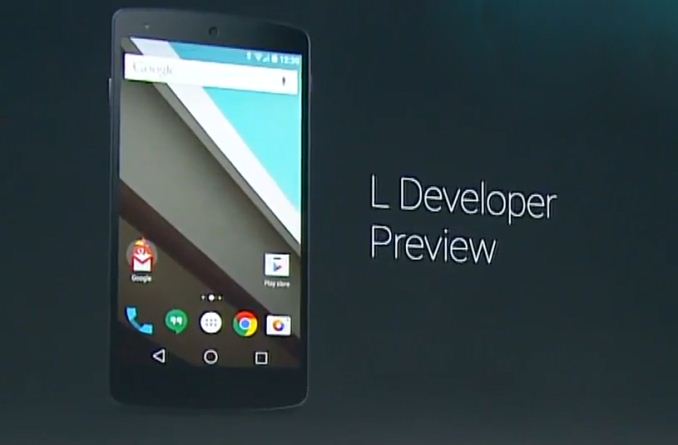
Today, Google finally posted the system images for Android L on the Nexus 5 and 7, so I decided to take a look at them to see what’s going on. After flashing the images through fastboot, the first thing I noticed was just how much longer it takes to get past the first startup. This is definitely a significant departure from the Dalvik era, as the ahead of time compilation process happens on the first boot for system applications. There’s also a new boot animation that is a modification of the KitKat boot animations. The best description I can give is that the colors now orbit each other like electrons.
After booting, the setup process remains mostly unchanged from 4.4. Things definitely start to change once you get into the main UI though. While it’s hard to show some of the animations, there’s definitely a great deal more depth to the UI than before. One of the first things that I noticed was the change in the notification drawer. Now, instead of tapping a button to get to the quick settings, it’s just another swipe down to view that panel. It definitely has a sense of depth as well, as the icons seem to scroll out underneath the notification panel.
Once you actually go into the settings menus, things start to look very different. The old menu still remained rather dark in its design, but the new menu uses a white backdrop for a lighter feel. In general, it feels very much like Sense 6 in this regard. There’s also a new landscape view to increase information density when compared to previous versions. The new overscroll animations are also much more reactive than before, and the shape of the overscroll varies based upon where your finger is. This same reactive animation behavior can be seen throughout the UI now.
It seems that the most consistent motif in this preview release is responsiveness, and not just in animations. For one, scrolling through a listview is the smoothest experience I’ve ever had in Android, bar none. It’s strange that I’ve come to expect this, but trying to scroll through a long comment thread in a Reddit client before caused pauses and stutters without fail. The same is no longer true in this build on the Nexus 5. Scrolling through a ~700 comment thread happens with no perceivable stutter. It’s still possible to get the device to choke though, and the Play Store home page still seems to have some stutters and pauses while scrolling. It’s definitely smoother than doing the same on the One (M8).
There are also changes to the lockscreen. For now, it seems that lockscreen widgets are gone. The new lockscreen also adds an iOS-style notification display, which is definitely a useful feature. Swiping away these notifications is relatively simple as well. Swiping right on the lockscreen now brings up the phone application, and swiping left brings up the camera application as always. I did notice a bit of bugginess, as swiping down on the lockscreen seems to hide both the clock widget and notification bar with no way to get it back unless you unlock the phone. Swiping down from this state brings down the quick settings, but it’s no longer attached to the notification drawer. Also, it seems that there’s some sort of charge estimation display now, as on the lock screen it displayed the time left until the phone was fully charged.
The new multitasking UI is also surprisingly usable. In this regard I think the information density has been increased, as it’s theoretically possible to show up to four application tiles at one time instead of the three that used to be shown. The same use of depth is also helpful in this design, as it help to establish a sense of chronology that wasn’t quite there with the old multitasking UI. Here, scrolling through even the longest of histories is flawlessly smooth and without pauses. As always, apps can be closed by swiping left or right to remove them from the multitasking UI.
Going through the settings and digging a bit deeper, I’ve managed to find some information about this build. Based upon the build.prop, this release seems to be quite new as it was built on June 18th, just a week before the keynote. There are also some new settings in the developer options menu, such as WiFi verbose logging, simulated color space, and a NuPlayer option.
Overall, I’m quite excited to see how Android L turns out by the time a release OTA rolls around. The only real issue I have at this point is that some UI elements such as the clear all notifications button have disappeared with this build. I suspect that this version of Android will be a significant change unlike the updates from 4.2 to 4.4. With any luck we’ll be able to track the changes between each preview release to see how Android L evolves until its release in the fall.
Edit: Just a quick note about the power saver function. Based on what I can immediately observe, brightness is decreased. The governor seems to be a bit more reluctant to reach maximum clock as well, and seems to prefer using 720 MHz even though the max is 960 MHz.


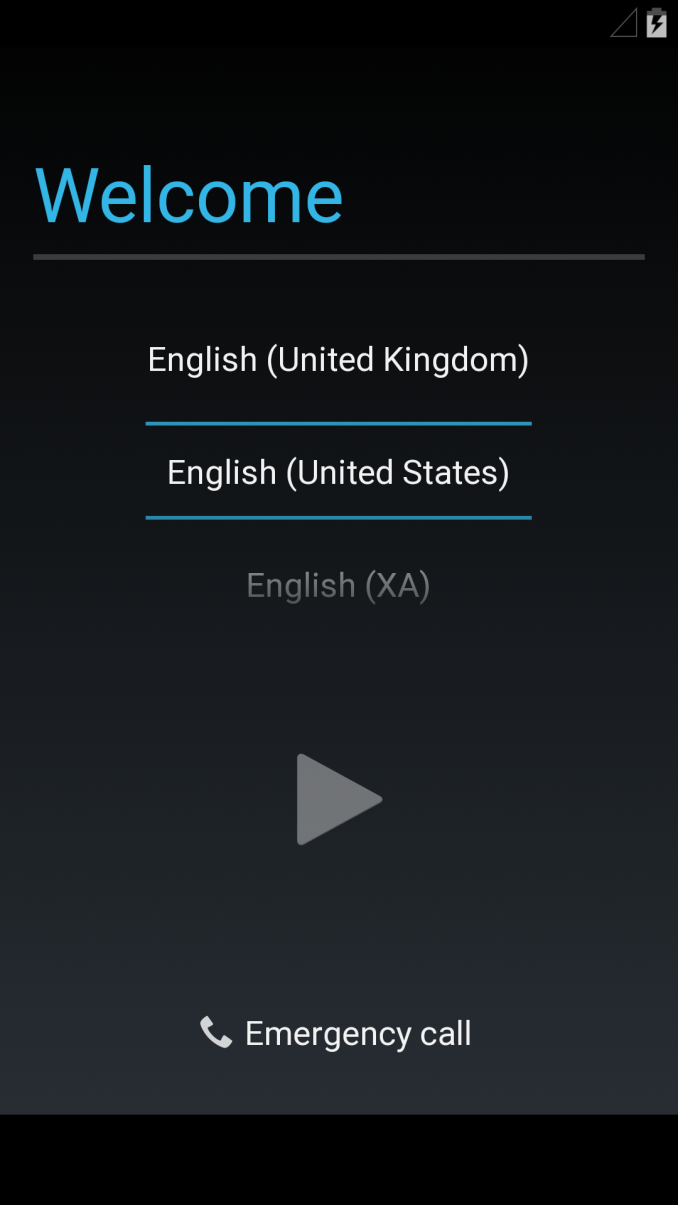

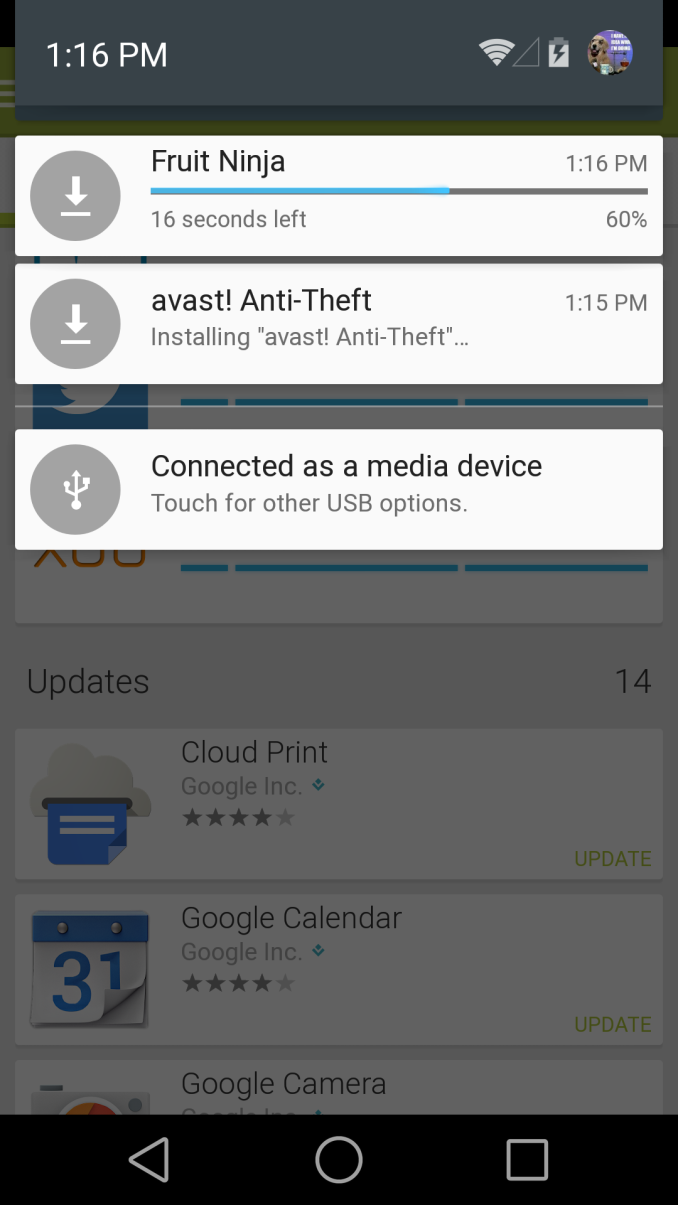

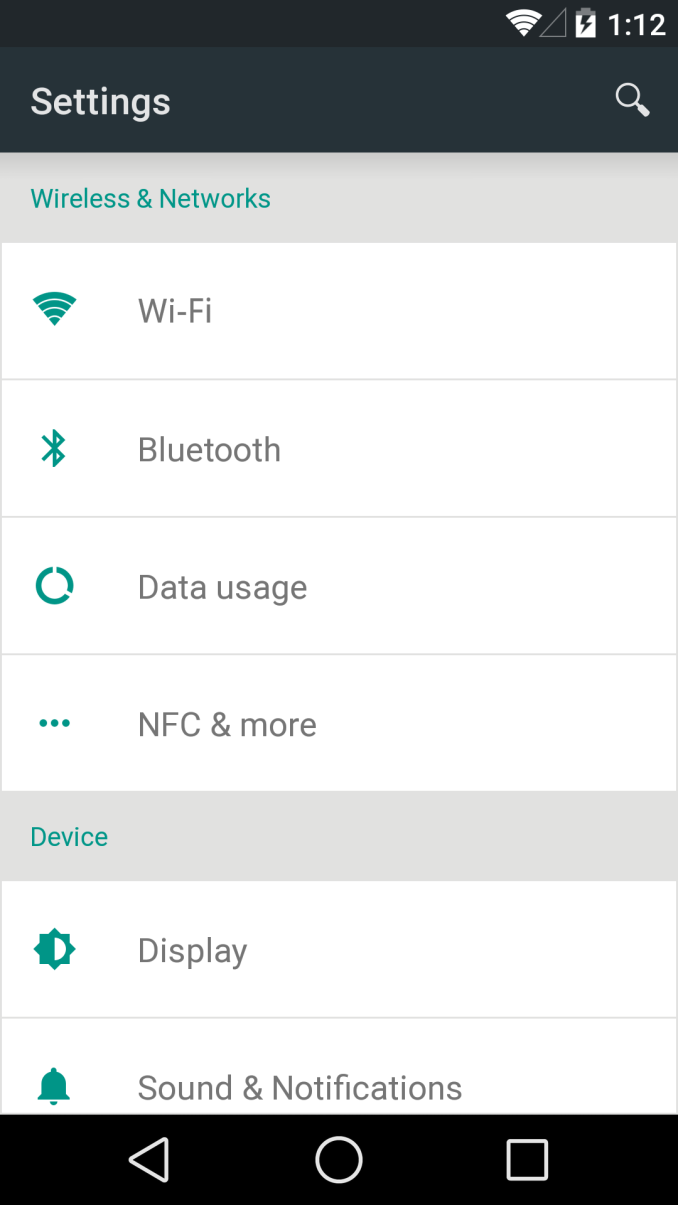
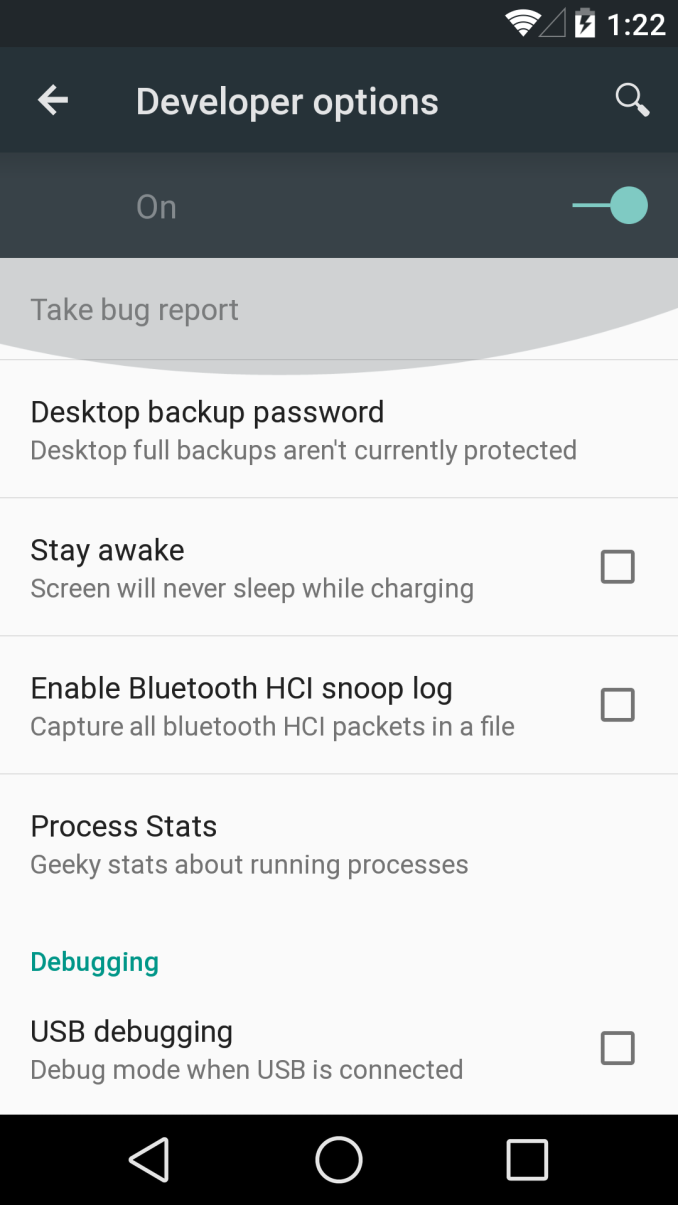
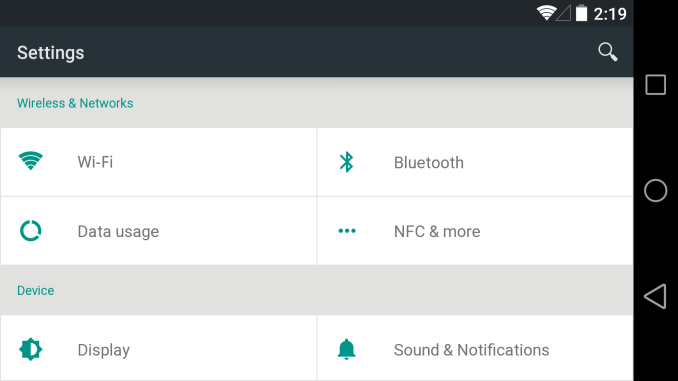
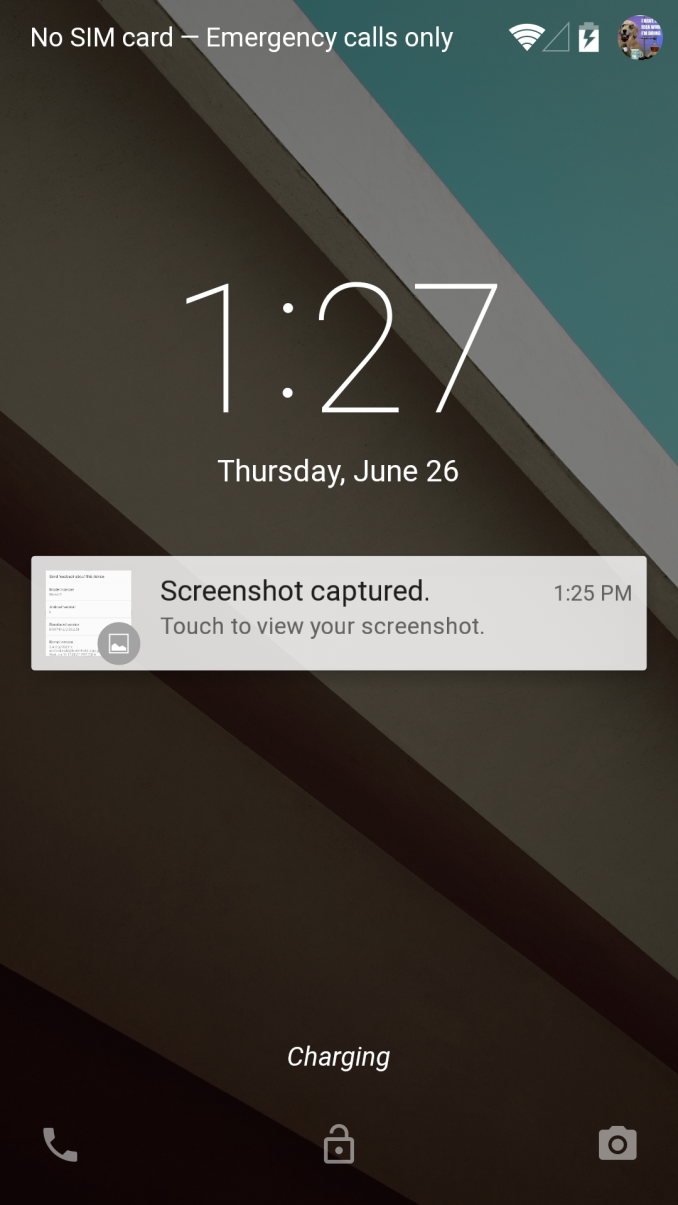
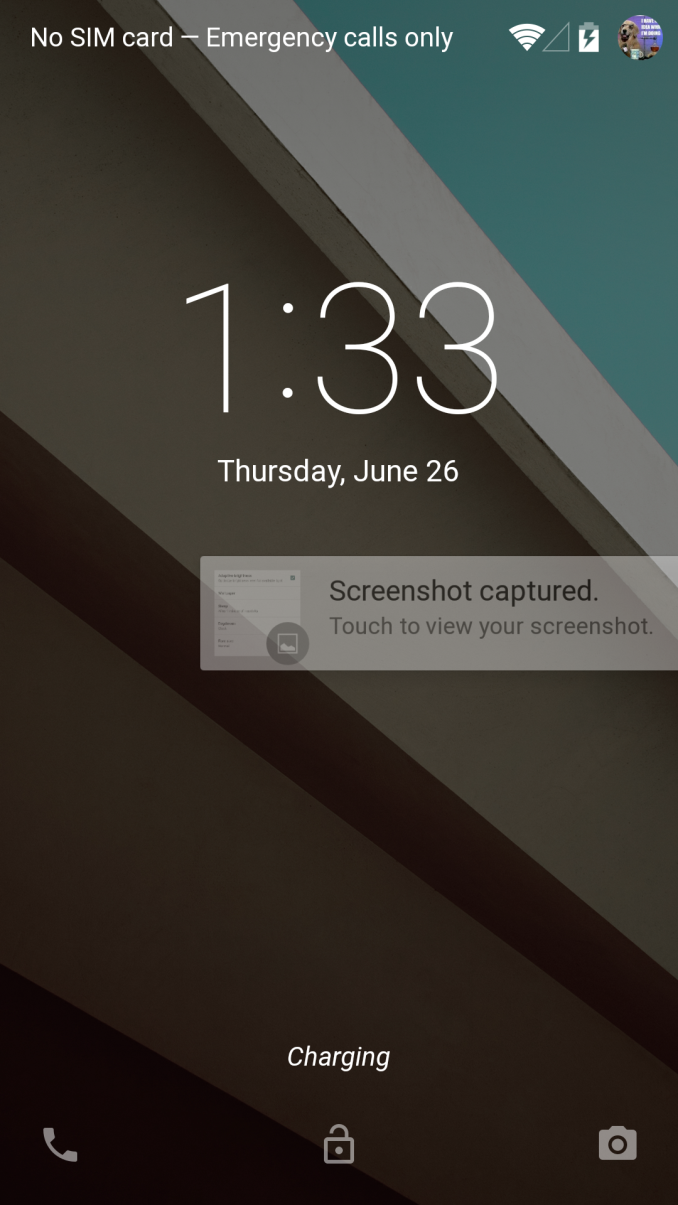
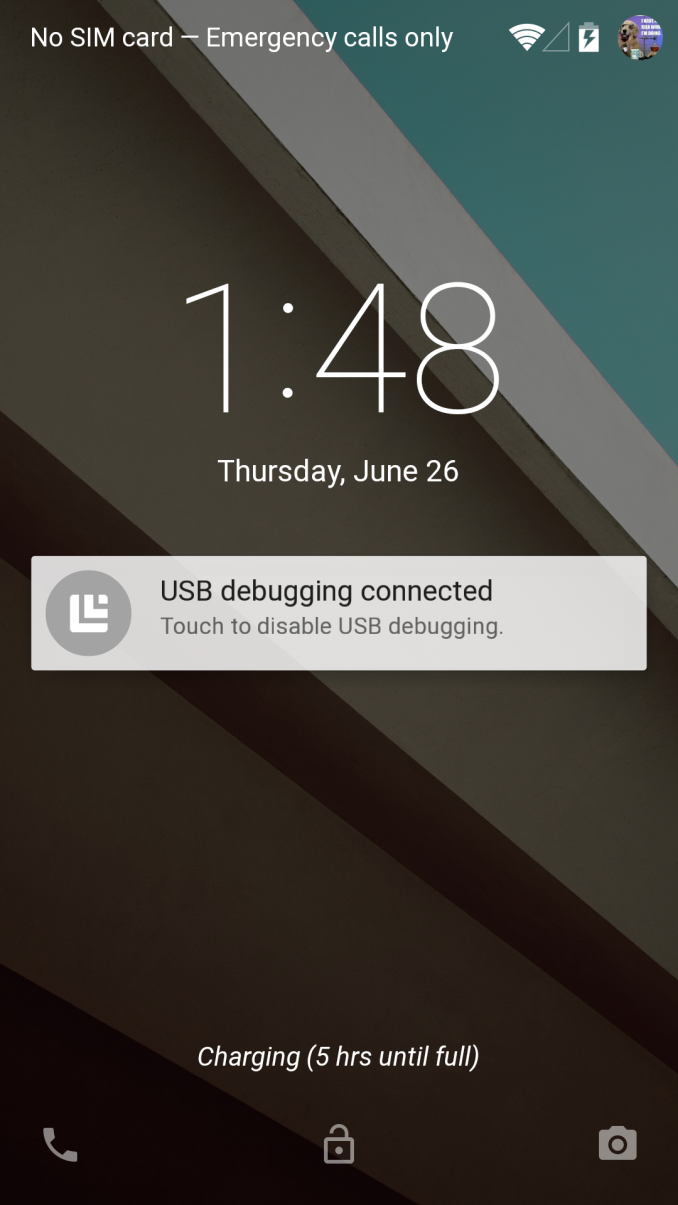
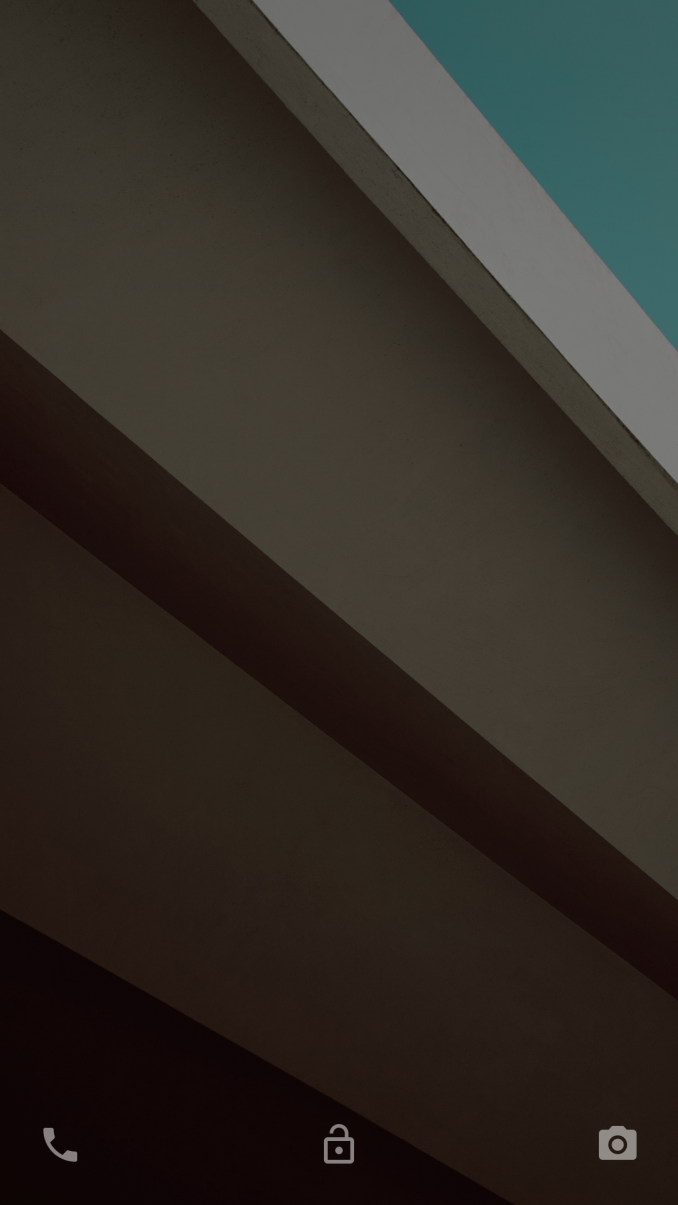
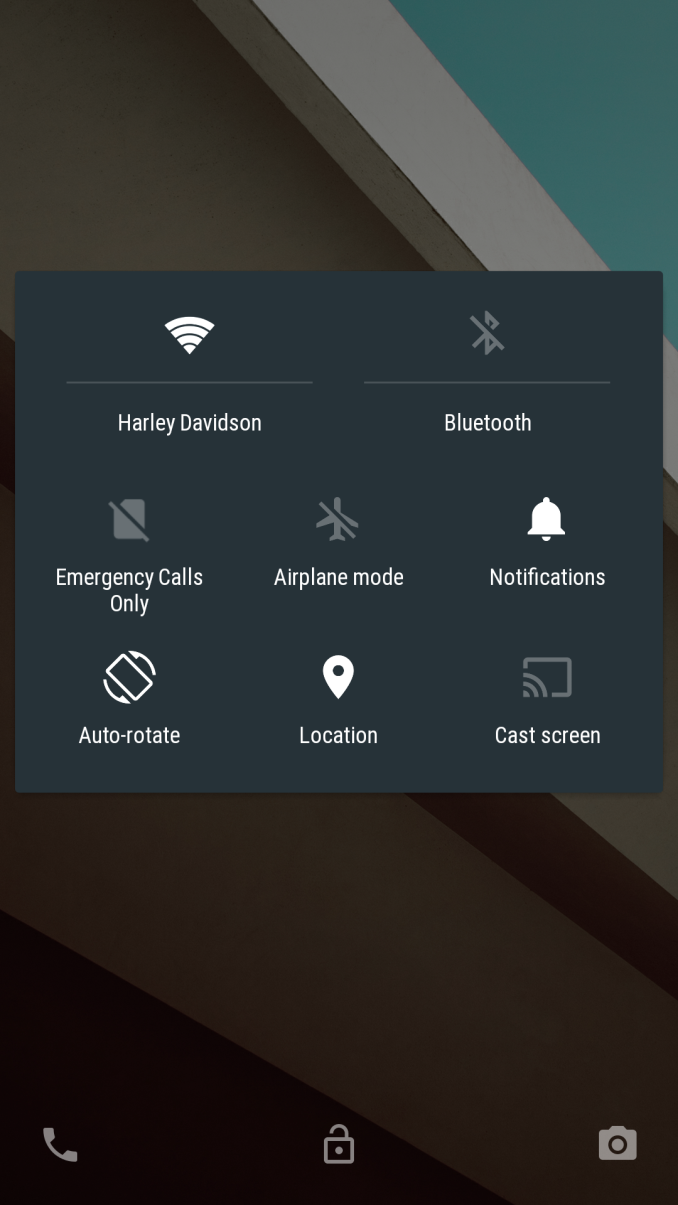

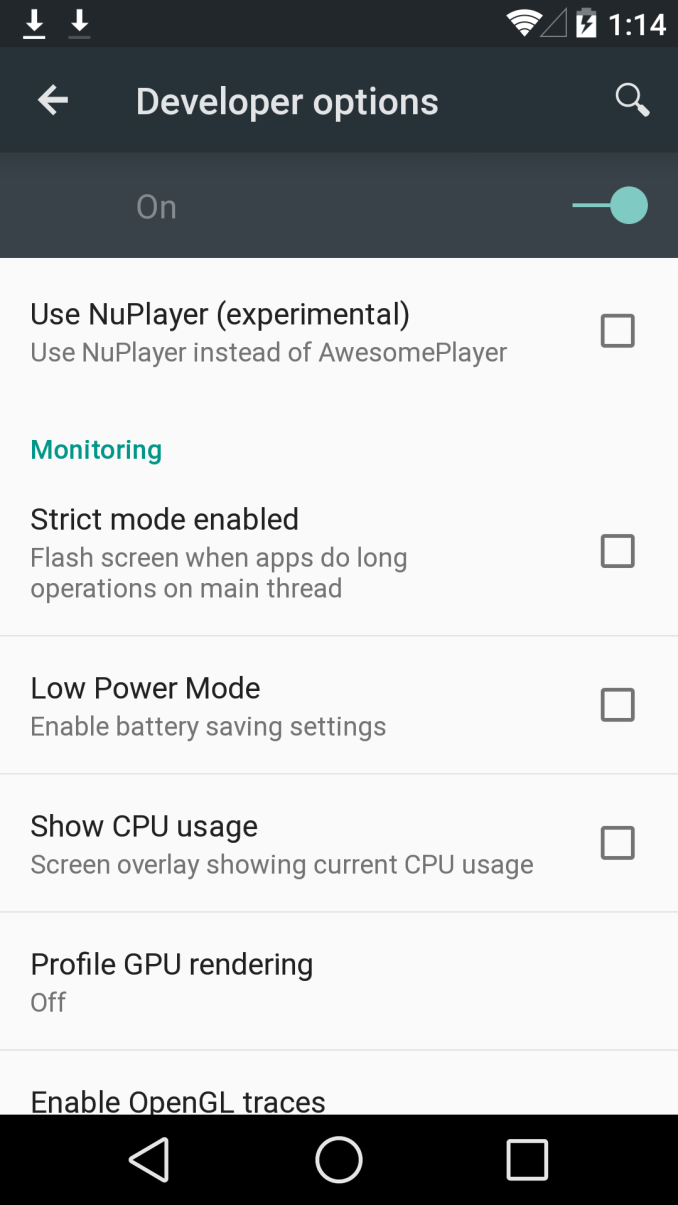
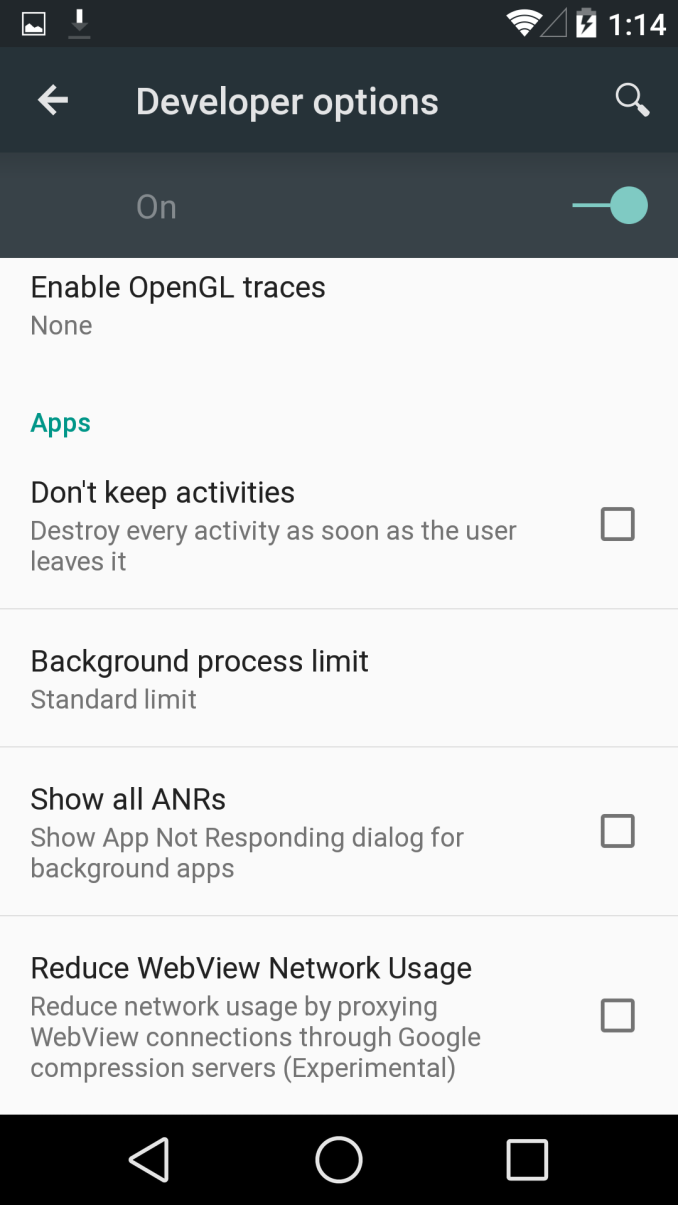














63 Comments
View All Comments
deltatux - Sunday, July 6, 2014 - link
F2FS is still considered experimental. Wouldn't see it be the default Android FS for another year or 2. Filesystem development takes a lot of time and effort, if you don't mind it being experimental and can handle the occasional bugs then you can always flash F2FS capable ROMs and format the partitions as such yourself :).UltraWide - Thursday, June 26, 2014 - link
What about the granular security options Google talked about?JoshHo - Thursday, June 26, 2014 - link
I currently don't see this, going into maps works the same way it always has without any notification or popup. It may be coming in a future release?tuxRoller - Thursday, June 26, 2014 - link
Aside from frame consistency have you noticed any decrease on touch latency that was mentioned (on the order of a few frames, so 16-48ms faster, or even 32-96ms if they were talking about the 30fps they used to use)? For me, the touch lag has been the biggest differentiator between the two platforms (Windows latency seems roughly the same as android to me).lilmoe - Thursday, June 26, 2014 - link
I'd like to hear about that too. Touch lag drives me nuts, and I have no idea why this issue hasn't been addressed since Jelly Bean.tuxRoller - Friday, June 27, 2014 - link
Good question. I've wondered the same thing. My guess is that the problem is multiply. One, and the biggest, drivers. Google COULD do something about this by mandating drivers meet certain criteria (the best solution for all is for all driver work to happen in the Linus tree, upstream). Two, Google should move to the fully preemptible Linux kernel. There was a great presentation by a RH engineer regarding the preempt kernel (the one Google is based on, not the rt kernel i'm speaking about) and its odd behaviors. The big takeaway is that it had, in cases of high load, a far higher jitter than even the cooperative kernel that is the default, let alone the rt branch. Three, and this may no longer be true, they need to optimize their drawing/dispatch libraries and actual rendering code. They've made massive cleanups starting with honeycomb, but there may be more left.Regardless of the cause, I wish the reviewers would talk more about this issue as it relates to the audio issue as well. We'll see if Josh has any thoughts, hopefully.
ivanc - Friday, June 27, 2014 - link
Do you still have the link to the presentation?tuxRoller - Friday, June 27, 2014 - link
LCA14: LCA14-506: Comparative analysis of preempt…: http://youtu.be/QiguBicpB88I believe this was it. Also, it was a linaro engineer, not rh.
tipoo - Friday, June 27, 2014 - link
The HTC One M8, the Note 3, and I think the GS5 have all posted lower touchscreen response times than the iPhone 5S. That debate is down to the hardware/driver level now, Android has gotten out of the way.tuxRoller - Friday, June 27, 2014 - link
Those are from that French site, correct? I'm not sure about their methodology b/c those devices also have noticeably higher latency than iOS devices.The qualitative test is easy to perform by looking at the lag between finger and content just after beginning movement. The key is not to move so fast that you can't see the lag. Those reviewers that manically move their finger on a screen to show how android is responsive are showing something makes it difficult to see the issue.